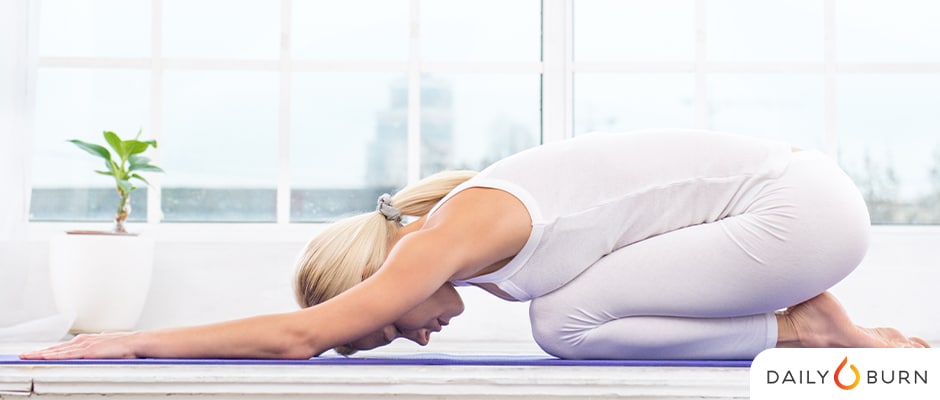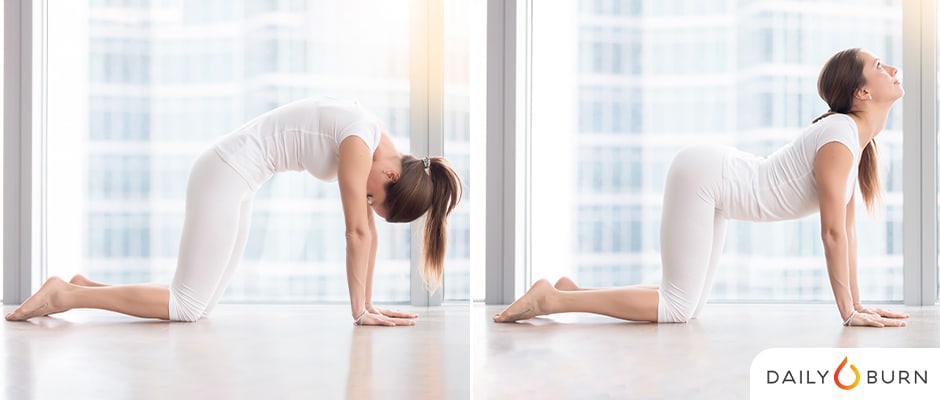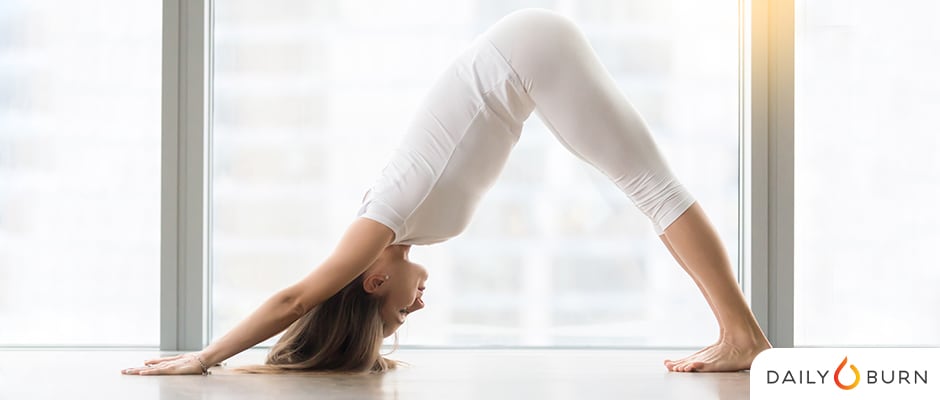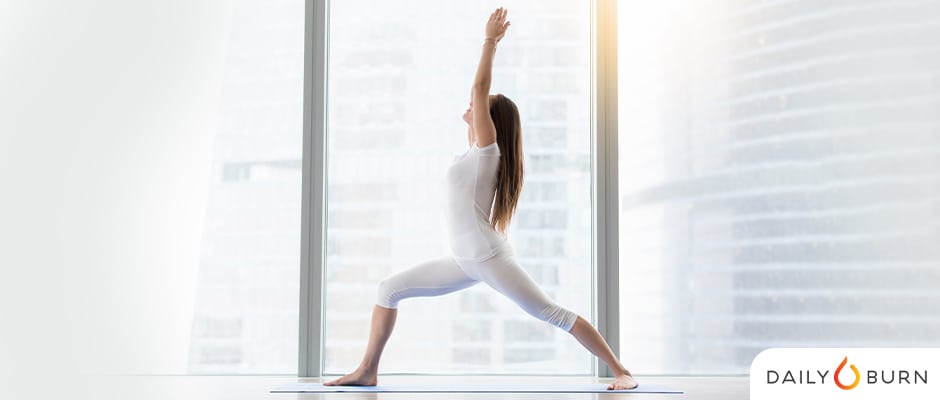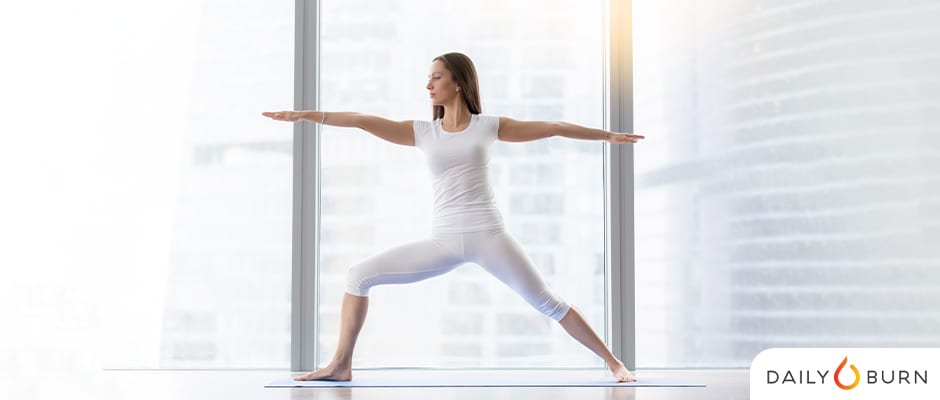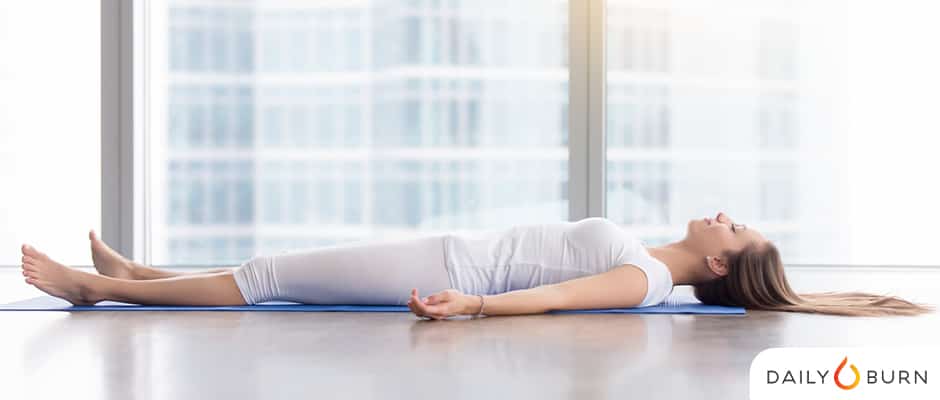If you’re a yoga newbie, it’s completely normal to feel intimidated by the die-hard yogis who warm up for class with handstands. Yes, handstands. But remember, everyone’s got to start somewhere. “In theory, there are no poses you must know before a class — you’re going there to learn,” says Mandy Ingber, New York Times best-selling author of Yogalosophy: 28-days to the Ultimate Mind-Body Makeover, not to mention the woman responsible for Jennifer Aniston’s yoga addiction (and rock-hard abs).
Even if it’s Day 1 of your exercise journey, your task is simple: Throw on some form-fitting clothing (you’ll be able to see your body position better — and avoid a wardrobe malfunction), then get familiar with these seven basic poses. While you may not see all of them in every class, they’ll help you get started, plus make you feel more comfortable as you progress. So grab a mat and read on as Ingber and fellow yogi Tanya Boulton, a New York-based instructor, breaks down the must-know beginner yoga poses you’ll want to learn to pick up any yoga practice.
RELATED: Yoga Fundamentals: The Yoga Workout You Can Totally Do
7 Basic Yoga Positions for Beginners
1. Mountain Pose (Tadasana)
What to Know: “The mother of all yoga poses,” according to Ingber, “mountain only looks easy.” This two-footed stance is the foundation for many other positions that require awareness and balance. “It is through this pose that one finds the proper alignment and shape for additional movements,” she says.
How to Do It: Stand with feet together and arms at your side. Ground your feet, making sure to press all four corners down into the ground. Next, straighten your legs, then tuck your tailbone in as you engage your thigh muscles. As you inhale, elongate through your torso and extend your arms up, then out. Exhale and release your shoulder blades away from your head, toward the back of your waist as you release arms back to your sides.
2. Child’s Pose (Balasana)
What to Know: Consider this exercise your reset moment. Simple in design, this easy pose relaxes your nervous system and is a great place to take a breather during class if you need one. Got knee problems? Make sure to lower into this position with extra care.
How to Do It: Start in a kneeling position with toes tucked under. Lower your butt towards your feet as you stretch your upper body forward and down with arms extended. Your stomach should be comfortably resting on thighs, with your forehead touching the mat.
3. Cat/Cow Pose (Marjaryasana to Bitilasana)
What to Know: Cat/cow is a great way to warm up your back, explains Ingber, and get your body ready for downward-facing dog. It also helps address mobility (hello, desk jobs) and work your core without the extra stress on your wrists and shoulders that you might feel in a down dog move.
How to Do It: Begin with hands and knees on the floor, spine neutral and abs engaged. Take a big inhale, then, as you exhale, round your spine up towards the ceiling and tuck your chin towards your chest, releasing your neck. On the next inhale, arch your back and relax your abs. Lift your head and tailbone upwards, being careful not to place any pressure on your neck by moving too quickly or deeply.
RELATED: 50 Resources to Step Up Your Yoga Game
4. Downward-Facing Dog (Adho Mukha Svanansana)
What to Know: One of the most recognizable poses of the bunch, down dog is a great way to stretch your back, shoulders, arms, hamstrings and well, just about everything. And it gets you calm and centered, too.
How to Do It: Come onto hands and knees with palms just past your shoulder, fingers pointing forwards. Knees should be under your hips and toes tucked. Lift your hips and press back into a V-shape position with your body. Feet should be hip-width apart. Keep in mind, it’s OK if you can’t get your feet to the floor (your hamstrings might be too tight). Spread through all 10 fingers and toes and move your chest towards your legs.
5. Warrior I (Virabhadrasana I)
What to Know: The first in the Warrior series, this pose strengthens your legs and opens your hips and chest, while also stretching your arms and legs. While holding this exercise, you’ll see an increase in your concentration and balance — both essential qualities to carry through a yoga practice.
How to Do It: Start in mountain pose. As you exhale, step your left foot back about four feet, so you’re in a lunge position with the right ankle over the right knee. Raise your arms straight overhead, biceps by ears, and turn your left foot about 90 degrees to face the left wall. Align your left heel perpendicular with your right heel. Expand your chest and pull your shoulders back, then lower down toward the floor as you lift your arms up. Make sure your hips stay square to the front, as you continue to breathe.
6. Warrior II (Virabhadrasana II)
What to Know: Similar to Warrior I, Warrior II offers just a slight variation, with your upper body rotated to the side instead of facing forward. You’ll still reap the same quad-strengthening benefits of Warrior I, but you’ll also open up your hip flexor muscles for greater flexibility.
How to Do It: Begin in mountain pose. Exhale and step your left foot back about four feet, making sure the heels are in line. Turn your back foot 90 degrees so that it’s now perpendicular with the front one. Raise your arms to shoulder height, parallel to floor, with your right arm in front of you, and left arm behind. Bend your front knee so it’s directly over ankle and sink hips low until the front thigh is parallel to floor. Look straight ahead, eyes in line with your front-facing arm.
RELATED: 3 Basic Yoga Poses for Better Balance
7. Corpse Pose (Shavasana)
What to Know: Lying around may seem pointless, but this is one of the most meditative moments in any yoga practice. Corpse pose calms the mind, relieves stress and induces a relaxed state. (Why do you think yogis are so chill?)
How to Do It: Lie down on your back and let your feet fall to their sides. Bring your arms alongside your torso, but slightly separated with palms facing the sky. Relax the entire body — your face included. Usually the final pose in a class, you’ll stay in this pose anywhere from 30 seconds to five or 10 minutes. Your instructor will cue you when to slowly awaken your thoughts and return to a seated position.
Not a Daily Burn member? Sign up at dailyburn.com and start your free 30-day trial today.
Originally published July 2015. Updated January 2018 and January 2022
All images via Shutterstock


